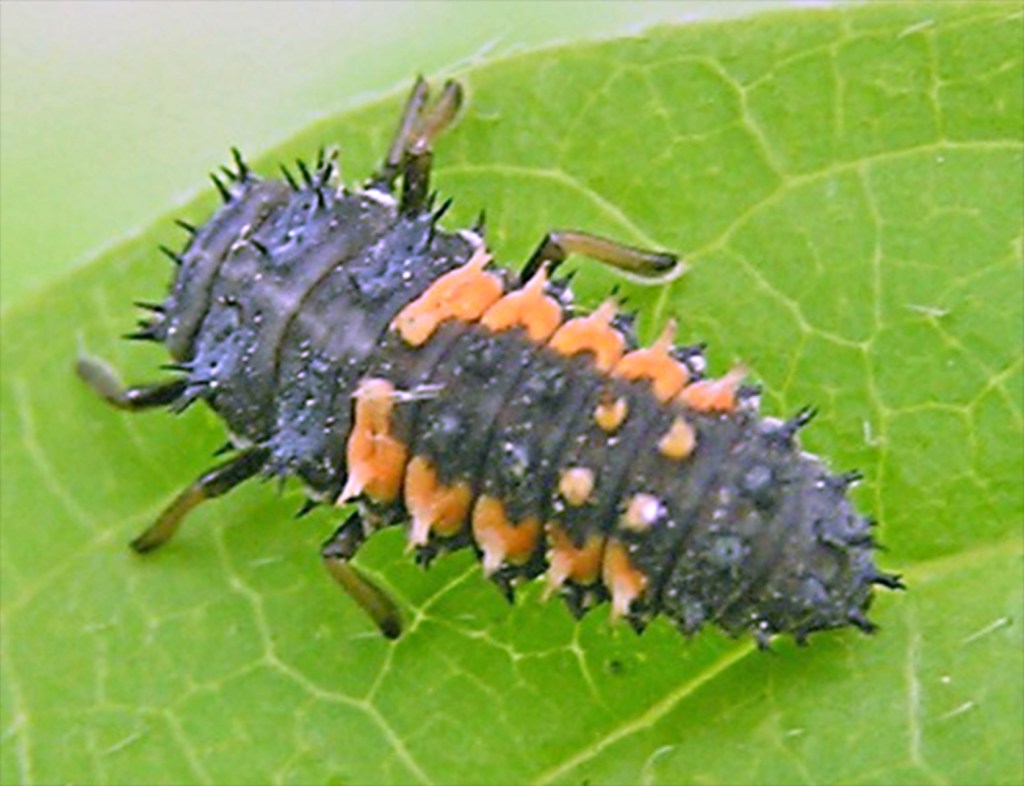ONE GARDENER TO ANOTHER: Don’t bug me while I’m in the garden
Published 6:45 am Monday, February 12, 2018

- Ladybug and their larvae eat aphids, mites, scale insects, thrips and mealybugs. The larvae resemble tiny, colorful alligators.
As with anything, there is good and bad, and bugs in the garden are no exception.
Although pest insects can feed on the foliage and roots of plants, there are also a fair number of good bugs that feed on them. Less than 2 percent of insects worldwide are considered pests.
Trending
Insect pest management depends not only on these friends to the garden, but it also starts with planning before planting. Being proactive before the problem arises is a more comprehensive strategy than trying to manage a pest problem after they have made themselves at home in your garden.
Planning before planting
Healthy soil will produce plants better able to resist insects and disease. Before planting, turn over the soil and add organic matter such as manure or compost to supply essential nutrients.
Crop rotation also is beneficial in aiding in soil health.
Plants within the same family are susceptible to the same fungal, bacterial and viral pathogens, as well as insects. Refraining from growing the same plant family in the same location year-to-year will decrease disease and insect pressure.
Pathogens and insects overwinter in garden soil and plant debris. By moving the disease or insect host plants, it becomes more difficult for the pests to infect the plants.
Trending
Setting out to find their food, many will die along the way or fall prey to birds or other good bugs that prefer them as food.
Companion planting is another excellent strategy to repel insect pests. For example, planting garlic among vegetable plants helps to deter Japanese beetles, aphids and spider mites. Tomato plants benefit from basil planted near them to repel hornworms. Colorful marigolds planted along with squash and cucumbers repel cucumber beetles and nematodes.
Trap planting, like companion planting, gives insect bugs a choice of food source. For example, some tomato worms prefer dill over tomatoes. Once the insect bugs infest the trap plant, it can either be disposed of entirely or the insects can be picked off the plant.
To deter cutworms, place a collar, such as a paper cup with the bottom removed, around the stem of a plant pressed an inch or so into the soil.
Insecticides should only be used as a last resort to prevent insect damage, as they kill beneficial insects as well as harmful ones.
Beneficial Bugs
• Ladybugs (also called lady beetles) and their larvae eat aphids, mites, scale insects, thrips and mealybugs. The larvae resemble tiny, colorful alligators.
• Assassin bugs are long-legged predators who stalk their prey. They feed on everything from small insects such as aphids to larger prey, such as caterpillars. Take care if you handle one of these beneficial bugs, because they have quite a nasty little bite. Actually the “bite” is them stabbing you with their needlelike mouth part.
• Ground beetles feed on snails, slugs, potato beetle eggs and larvae, cutworms and other caterpillars. Usually nested under rocks or logs during the day, these beneficial bugs feed at night. Most ground beetles are black and shiny, but some have a metallic look.
• Hover flies, also called Syrphid flies, closely resemble bees with their bright yellow and black markings. The adults are pollinators, while the larvae feed on aphids and small caterpillars. The larvae are particularly adept at crawling in curled-up foliage where aphids hide.
• Big-eyed bugs, with their large bulging eyes feed on aphids, mites and insect eggs, thrips and other small insects. Nymphs, the immature form of the insect, can eat as many as 1,600 spider mites before reaching adulthood. Adults can feed on as many as 80 mites per day.
• The larvae of lacewings, who are comically also called aphid lions, are gluttonous feeders. They chow down on aphids, scales, thrips, mites and the eggs of other small insects.
It is vital to the success of your garden to not only identify the harmful insects in your garden, but the beneficial bugs as well. Until next week, happy gardening.
— Irland, a member of the Limestone County Master Gardeners, can be reached at kippirland@hotmail.com. For more information on the Limestone County Master Gardeners, visit http://mg.aces.edu/limestone.





